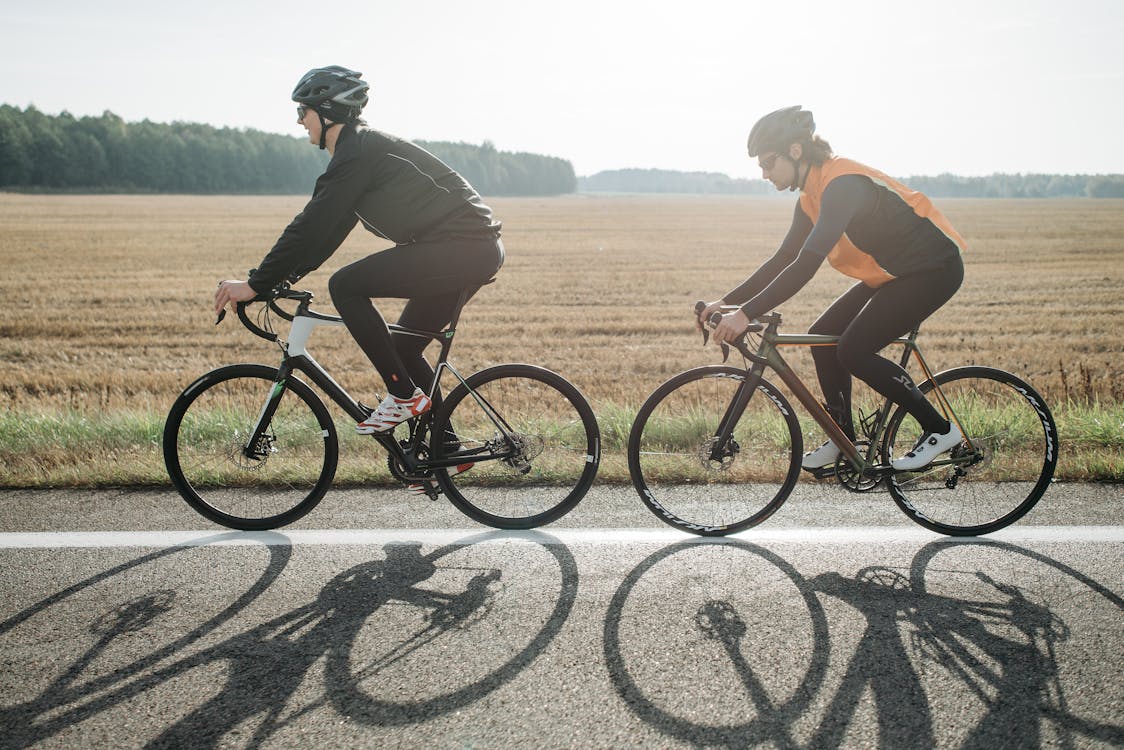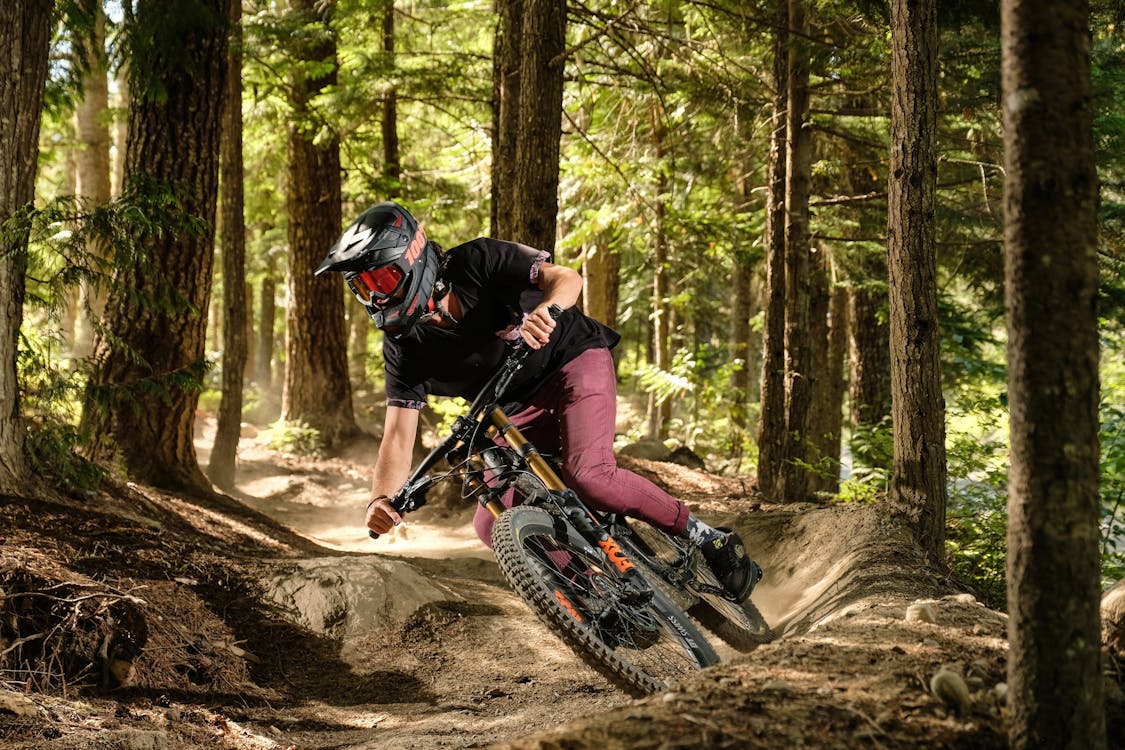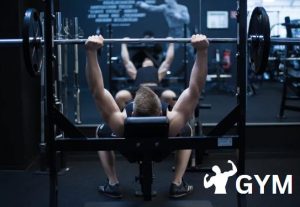
In recent years, cycling has emerged as more than just a mode of transportation—it has become a vibrant and exhilarating recreational pursuit and a formidable fitness activity. The open road, the winding trails, and the sense of freedom that comes with cycling have captured the hearts of countless enthusiasts worldwide. From urban streets to rugged mountain paths, individuals of all ages and backgrounds are embracing the joy and health benefits that cycling brings. As the cycling community continues to expand, so does the quest for the ultimate cycling experience.
Yet, as with any endeavor, success and satisfaction in cycling aren’t solely a matter of getting on a bike and taking off. The difference between a mediocre ride and an extraordinary one lies in the careful curation of various elements that converge to create an optimal cycling experience. From the choice of the right bike and essential safety gear to mindful route planning, meticulous maintenance, and even the mental approach to each ride—each facet plays a vital role in elevating cycling from a simple activity to a deeply gratifying journey.
This article is a comprehensive guide designed to shed light on the essential elements that culminate in the best cycling experience. Whether you’re a beginner seeking advice or a seasoned cyclist looking to fine-tune your approach, the following chapters will unravel the intricate web of considerations that contribute to an unforgettable ride. Join us as we delve into the world of cycling, where the perfect blend of preparation, equipment, and enthusiasm awaits, ready to propel you towards an extraordinary cycling adventure.
- The Right Bike: Choosing Your Steed
- For Best Cycling Experience: Safety First
- Dress for Success: Cycling Apparel
- Maintaining Your Ride: Bike Maintenance and Care
- Fueling Your Ride: Nutrition and Hydration
- Planning Your Route: Mapping and Navigation
- Training and Progression: Setting Goals
- Mindset and Enjoyment: Mental Aspects of Cycling
- Conclusion
The Right Bike: Choosing Your Steed

When embarking on a cycling journey, the very first decision you’ll encounter is one of the most crucial: choosing the right bike. With a plethora of options available, from sleek road bikes to rugged mountain bikes and versatile hybrids, the choice you make will significantly impact your riding experience. Let’s delve into the nuances of this decision-making process to ensure you find the perfect steed for your needs.
The Significance of Selecting the Appropriate Type of Bike
The world of cycling is as diverse as the terrains it encompasses. The type of bike you choose is akin to selecting the tool that best suits the job at hand. Road bikes are built for speed and efficiency, ideal for smooth pavements and long distances. Mountain bikes, on the other hand, are designed to tackle rugged trails, offering durability and stability. Hybrid bikes strike a balance, making them versatile options for both city streets and light off-road paths. By understanding the distinct features and purposes of each bike type, you can align your choice with your intended riding style and goals.
Key Factors to Consider When Choosing a Bike
Beyond the broad categories, there are several pivotal factors to weigh when selecting your bike:
- Frame Size: The right frame size ensures comfort and proper positioning while riding. A bike that’s too small or too large can lead to discomfort and even injuries. Consult sizing charts provided by manufacturers or visit a local bike shop for expert advice.
- Materials: Bikes are crafted from a range of materials, including aluminum, carbon fiber, steel, and titanium. Each material has its strengths and characteristics, influencing factors such as weight, durability, and cost.
- Features and Components: From gear ratios to brake types and suspension systems, the components of a bike play a vital role in its performance. Consider your riding preferences—whether it’s speed, control, or comfort—and select features accordingly.
The Importance of Professional Bike Fitting in Cycling
While choosing the right type of bike and considering essential factors are fundamental steps, one additional aspect can elevate your cycling experience: a professional bike fitting. A bike fitting involves adjusting the bike’s dimensions to match your body’s unique biomechanics. This personalized alignment enhances not only your comfort but also your efficiency and performance on the bike.
Professional bike fitters take into account factors like saddle height, handlebar position, and pedal alignment. By optimizing these elements, a bike fitter can help prevent discomfort, reduce the risk of injuries, and even enhance your power output. Whether you’re a casual rider or an aspiring athlete, a bike fitting is an investment that pays dividends in terms of riding enjoyment and overall well-being.
For Best Cycling Experience: Safety First

Cycling offers a thrilling and liberating experience, but it’s essential to prioritize safety every time you hit the road or trail. Equipping yourself with the right protective gear can mean the difference between an enjoyable ride and a potentially dangerous situation. Let’s delve into the world of essential protective gear and understand why it’s a non-negotiable aspect of cycling.
Necessary Protective Gear and Their Importance
- Helmets: A helmet is arguably the most crucial piece of protective gear for any cyclist. It serves as your first line of defense against head injuries in case of falls or collisions. Modern helmets are designed with advanced materials and construction techniques to absorb impact and reduce the risk of traumatic brain injuries. To surf for the best helments on Amazon, follow this link.
- Gloves: Cycling gloves provide more benefits than just a fashionable accessory. They offer grip and control, reduce vibration on rough surfaces, and protect your hands in case of a fall. Additionally, gloves can help prevent blisters and numbness during longer rides. If you want to buy good cycling gloves, visit Amazon.
- Knee and Elbow Pads: These protective accessories are particularly relevant for off-road and mountain biking. Knee and elbow pads provide cushioning and protection to these joints during potential impacts, adding an extra layer of security when navigating challenging terrains. For more protective accessories, make a search on Amazon.
The Role of Safety Gear in Injury Prevention
The road or trail can be unpredictable, and accidents can happen to even the most skilled cyclists. Protective gear acts as a shield against injuries that may occur due to unexpected circumstances. Helmets, in particular, significantly reduce the risk of head trauma, which can have life-altering consequences. By donning the appropriate protective gear, you’re not only safeguarding your body but also ensuring that you’re able to enjoy cycling for years to come.
Choosing the Right Safety Gear for Different Disciplines
Different cycling disciplines demand different levels and types of protection. For instance:
- Road Cycling: Helmets are absolutely essential, along with padded gloves for comfort during long rides.
- Mountain Biking: In addition to helmets and gloves, knee and elbow pads become crucial due to the technical nature of off-road trails.
- BMX and Downhill: For extreme cycling disciplines, full-face helmets provide comprehensive protection to the head, face, and jaw, while body armor can safeguard against more severe impacts.
When choosing safety gear, ensure it meets appropriate safety standards and offers a snug, comfortable fit. Modern gear often incorporates ventilation and moisture-wicking properties for enhanced comfort during rides. While safety gear may add some weight and cost to your cycling setup, the peace of mind and injury prevention they provide far outweigh these considerations.
Dress for Success: Cycling Apparel

Cycling isn’t just about the bike—it’s also about what you wear while riding. Specialized cycling apparel goes beyond aesthetics; it’s a key component of your cycling experience that can impact both your comfort and performance. Let’s explore the significance of dressing right for cycling and delve into the advantages of essential cycling clothing.
The Importance of Specialized Cycling Clothing
Cycling involves a unique set of movements and challenges that demand apparel designed specifically for the activity. Specialized cycling clothing is tailored to enhance your comfort and optimize your performance on the bike. Unlike generic sportswear, cycling apparel takes into account factors such as aerodynamics, moisture management, and padding, all of which contribute to a better riding experience.
Advantages of Essential Cycling Apparel
- Moisture-Wicking Fabrics: Cycling generates heat and sweat, and moisture-wicking fabrics are designed to keep you dry by rapidly moving sweat away from your skin. This not only prevents discomfort but also helps regulate body temperature.
- Padded Shorts: Cycling places pressure on your sit bones, which can lead to discomfort during longer rides. Padded cycling shorts provide cushioning, reducing the risk of chafing and soreness. The padding is strategically placed to provide support where you need it most.
- Appropriate Footwear: Cycling-specific shoes offer efficient power transfer from your legs to the pedals. They often come with cleats that attach to your pedals, improving your pedal stroke efficiency. Additionally, cycling shoes with proper ventilation keep your feet comfortable and dry.
Layering and Adapting to Changing Climates
Cycling often exposes you to varying weather conditions, and mastering the art of layering is essential for a comfortable ride:
- Cold Weather: Start with a moisture-wicking base layer to keep sweat away from your skin. Add an insulating layer for warmth, and top it off with a windproof and water-resistant outer shell to protect against the elements.
- Hot Weather: Opt for lightweight, breathable fabrics that allow air circulation. Sleeveless jerseys and shorts with mesh panels can help keep you cool. Don’t forget sunscreen and a lightweight cap to shield your face from the sun.
Tips for Layering:
- Avoid Overdressing: Overdressing can lead to excessive sweating and discomfort. Dress for the temperature you’ll experience during the ride, not the initial chill.
- Zipper Control: Cycling jerseys often come with a full-length zipper that allows you to regulate ventilation. Adjust it as needed to prevent overheating.
- Packable Layers: If you anticipate temperature changes during your ride, consider packable layers that you can easily stow in your jersey pockets.
The right cycling apparel can significantly enhance your riding experience. Specialized clothing designed for cycling not only improves comfort but also contributes to better performance by addressing the unique challenges of the sport. By choosing moisture-wicking fabrics, padded shorts, and appropriate footwear, you’re investing in your well-being on the bike. Additionally, mastering the art of layering equips you to conquer various weather conditions and enjoy cycling year-round. Remember, when it comes to cycling apparel, it’s not just about looking the part—it’s about feeling your best and optimizing your time on the road or trail.
Maintaining Your Ride: Bike Maintenance and Care

Your bicycle is more than just a piece of equipment—it’s a trusty companion that deserves the best care. Regular bike maintenance isn’t just about keeping your bike looking good; it’s essential for ensuring optimal performance, longevity, and, most importantly, your safety. Let’s dive into the world of bike maintenance and explore how you can keep your ride in top-notch condition.
The Significance of Regular Bike Maintenance
Think of your bike as a finely tuned instrument. Just like any instrument, it requires regular attention to function at its best. Regular maintenance prevents wear and tear, reduces the risk of breakdowns, and prolongs the life of your bike. A well-maintained bike also translates to a smoother and more enjoyable ride, ensuring that you get the most out of every pedal stroke.
Basic Maintenance Checklist
- Cleaning: Regularly clean your bike to remove dirt, mud, and debris that can affect performance. A clean bike also allows you to spot any potential issues more easily.
- Lubrication: Proper lubrication of moving parts prevents friction and wear. Apply lubricant to the chain, derailleurs, and other pivot points according to the manufacturer’s recommendations.
- Tire Inspection: Check tire pressure before each ride and inspect the tires for signs of wear, cuts, or punctures. Properly inflated tires ensure a smoother ride and better traction.
- Brake Check: Ensure your brakes are working effectively. Check brake pads for wear and adjust the brakes as needed for optimal stopping power.
- Gear Adjustment: Regularly check and adjust your bike’s gears for smooth and precise shifting.
- Bolt Tightening: Ensure all bolts are properly tightened to prevent components from becoming loose during rides.
- Wheel Trueness: Inspect your wheels for any wobbles or bends. True wheels ensure a smoother and more stable ride.
Benefits of Learning Basic Bike Repair Skills and Professional Assistance
Learning basic bike repair skills can empower you to perform routine maintenance and address minor issues on your own. This not only saves you time and money but also fosters a deeper connection with your bike. Resources such as online tutorials, books, and workshops can help you acquire these skills.
However, there are times when professional assistance is necessary. Complex repairs, major component replacements, or issues beyond your expertise should be entrusted to experienced bike mechanics. Seeking professional help ensures that your bike is properly diagnosed and repaired to maintain its safety and performance.
In conclusion, bike maintenance is a vital aspect of responsible cycling. Regular care not only optimizes your bike’s performance but also contributes to its longevity. By following a basic maintenance checklist, learning essential repair skills, and knowing when to seek professional assistance, you’re taking a proactive step toward ensuring that your bike remains a reliable companion for countless rides to come. Remember, a well-maintained bike isn’t just a reflection of your commitment—it’s a testament to your dedication to safe and enjoyable cycling.
Fueling Your Ride: Nutrition and Hydration

Cycling is a demanding physical activity that requires not only strong legs but also a well-fueled body. Proper nutrition and hydration play a pivotal role in enhancing your performance, sustaining your energy levels, and ensuring a safe and enjoyable ride. Let’s explore the importance of fueling your body right for your cycling endeavors.
The Importance of Proper Nutrition and Hydration
Cycling places significant demands on your muscles and cardiovascular system. Without adequate fuel, you may experience fatigue, decreased performance, and even potential health risks. Proper nutrition provides the energy your body needs to power through rides, while hydration maintains optimal bodily functions and prevents dehydration.
Guidelines for Fueling Before, During, and After Rides
- Pre-Ride Meals: Consume a balanced meal containing carbohydrates, protein, and healthy fats about 1-2 hours before your ride. This provides sustained energy without causing discomfort during the ride.
- On-the-Bike Nutrition: Depending on the length and intensity of your ride, aim to consume easily digestible carbohydrates such as energy gels, bars, or fruits. Stay hydrated by sipping water or a sports drink throughout the ride.
- Post-Ride Recovery: Refuel within 30 minutes of completing your ride. Consuming a mix of carbohydrates and protein helps replenish glycogen stores and aids muscle recovery. A balanced meal within a couple of hours after your ride further supports recovery.
The Role of Hydration in Preventing Cramps and Improving Endurance
Hydration is a critical factor that influences your cycling performance. Dehydration can lead to muscle cramps, decreased energy levels, and impaired cognitive function. Aim to drink water regularly before, during, and after your ride. On longer rides, consider using electrolyte-enhanced drinks to replenish lost minerals.
Staying properly hydrated also enhances your endurance by maintaining cardiovascular function, regulating body temperature, and optimizing nutrient transport to muscles. An adequate supply of fluids supports sustained performance and minimizes the risk of hitting a wall during longer rides.
In conclusion, fueling your body with the right nutrition and staying hydrated are non-negotiable aspects of successful cycling. Whether you’re embarking on a leisurely ride or challenging yourself with a long-distance race, your body’s performance relies on the fuel you provide. By following guidelines for pre-ride meals, on-the-bike nutrition, and post-ride recovery, you’re ensuring that your body has the energy it needs to conquer each pedal stroke. Moreover, prioritizing hydration prevents muscle cramps, bolsters endurance, and safeguards your overall well-being. Remember, your body is your engine—nourish it well, and it will power you through memorable and fulfilling cycling experiences.
Planning Your Route: Mapping and Navigation

Mapping out your cycling route is like sketching the blueprint of an adventure waiting to unfold. Whether you’re a leisure cyclist or a dedicated enthusiast, route planning is a fundamental step that can transform a simple ride into an exhilarating journey. Let’s explore the importance of route planning and delve into tools and techniques for seamless navigation.
The Significance of Route Planning for a Fulfilling Cycling Experience
Route planning adds an element of intentionality to your cycling endeavors. It allows you to tailor your ride to your preferences, whether it’s exploring scenic trails, conquering challenging climbs, or cruising through tranquil neighborhoods. Planning your route in advance also ensures that you’re well-prepared for potential road conditions, traffic, and elevation changes, leading to a more enjoyable and stress-free ride.
Embracing Digital Mapping Tools, GPS Devices, and Cycling Apps
- Digital Mapping Tools: Online mapping platforms such as Google Maps, Strava, and Komoot allow you to create, customize, and save routes. These tools provide real-time information on distance, elevation, and points of interest, enabling you to make informed decisions during your ride.
- GPS Devices: Dedicated GPS cycling computers offer turn-by-turn navigation, detailed mapping, and advanced performance metrics. They’re especially useful for longer rides and touring, where accurate navigation is crucial.
- Cycling Apps: Mobile apps designed for cyclists offer a blend of navigation, ride tracking, and social features. Many apps enable you to discover popular routes in your area and connect with fellow riders.
Tips for Selecting Routes Matching Your Skill Level and Preferences
- Know Your Skill Level: Be realistic about your fitness and skill level when selecting a route. Gradually challenge yourself as you gain experience.
- Research Terrain: Consider the type of terrain you’re comfortable with. Are you up for steep climbs, rolling hills, or flat stretches?
- Traffic and Safety: Prioritize routes with low traffic and safe cycling infrastructure, such as bike lanes or paths.
- Scenic Routes: If aesthetics are important to you, seek out routes that pass through picturesque landscapes or iconic landmarks.
- Distance and Time: Choose a route that aligns with the time you have available. Be mindful of your endurance level and plan accordingly.
- Variety: Mix up your routes to keep things interesting. Explore new areas and try different challenges to keep your cycling experiences fresh.
Route planning is a cornerstone of a successful cycling adventure. By selecting routes that match your skill level and preferences, you’re setting the stage for an engaging and rewarding ride. With the aid of digital mapping tools, GPS devices, and cycling apps, navigating unfamiliar territories becomes an intuitive and enjoyable part of the journey. Remember, the beauty of route planning lies in the ability to curate rides that align with your aspirations and create memories that will keep you coming back to the saddle time and time again.
Training and Progression: Setting Goals

Cycling is more than just pedaling—it’s a journey of personal growth and achievement. To make the most of your cycling experience, setting and pursuing achievable goals is a strategy that not only keeps you motivated but also propels your skills and fitness to new heights. Let’s explore the significance of goal-setting, delve into various training programs, and understand the importance of gradual progression.
The Value of Setting Achievable Cycling Goals
Goals act as beacons, guiding your efforts and shaping your cycling journey. Whether your aim is to increase speed, conquer longer distances, or enhance overall fitness, having clear and attainable goals provides a sense of purpose and direction. Achieving these goals brings a profound sense of accomplishment that fuels your enthusiasm and commitment to the sport.
Exploring Different Training Programs
- Interval Training: This technique involves alternating between periods of high-intensity effort and recovery. It improves cardiovascular fitness, boosts endurance, and enhances your ability to sustain fast speeds.
- Endurance Rides: These longer, steady-paced rides focus on building your aerobic base. They improve your body’s ability to utilize oxygen, leading to enhanced endurance and increased fat-burning efficiency.
- Hill Climbs: Hill training challenges your muscles and cardiovascular system, improving strength and power. It also hones your mental toughness as you conquer challenging inclines.
The Need for Gradual Progression
While enthusiasm may lead you to set ambitious goals, it’s crucial to progress gradually to avoid burnout and overexertion:
- Start Slowly: If you’re new to cycling or returning after a break, begin with manageable goals and gradually increase intensity, duration, and difficulty.
- Listen to Your Body: Pay attention to how your body responds to training. Overtraining can lead to injuries and decreased performance. Rest and recovery are as important as training.
- Periodization: Divide your training into periods of varying intensity and focus. This helps prevent plateauing and provides necessary recovery phases.
- Cross-Training: Engage in activities other than cycling to maintain overall fitness and prevent overuse injuries.
- Nutrition and Rest: Proper nutrition and ample sleep are critical for recovery and energy levels. Adequate hydration supports your performance.
Setting achievable cycling goals isn’t just about ticking boxes—it’s a path to continuous improvement and fulfillment. Whether you’re aiming to become a more skilled rider or challenging yourself with specific accomplishments, goals provide a roadmap to success. Training programs like interval training, endurance rides, and hill climbs are tools that help you realize these goals by targeting different aspects of your fitness. Remember, cycling is a journey, not a sprint; gradual progression ensures that you’re not only pushing your boundaries but also fostering a sustainable and enjoyable relationship with the sport.
Mindset and Enjoyment: Mental Aspects of Cycling
Cycling is a harmonious blend of physical exertion and mental fortitude. The way you approach challenges, harness your motivation, and manage your mindset can profoundly impact your cycling experience. Let’s delve into the crucial mental aspects of cycling and discover strategies to cultivate a positive mindset, manage stress, and tap into the sense of community within the cycling world.
Overcoming Challenges and Staying Motivated
- Embrace Challenges: Cycling is replete with challenges, from steep climbs to adverse weather. Viewing these challenges as opportunities for growth can lead to a sense of accomplishment when you conquer them.
- Set Realistic Goals: Break down your cycling goals into manageable milestones. Each accomplishment fuels your motivation to tackle the next challenge.
- Visualize Success: Mental imagery can boost confidence. Visualize yourself successfully completing a difficult climb or reaching a personal best.
Techniques for Maintaining a Positive Mindset and Managing Stress
- Mindful Breathing: Deep, rhythmic breathing can calm your mind and manage stress during rides. Focusing on your breath helps you stay present and focused.
- Positive Self-Talk: Replace self-doubt with affirming thoughts. Remind yourself of your achievements and capabilities.
- Mindfulness: Engage your senses fully in the present moment while riding. Notice the sights, sounds, and sensations around you to stay grounded and focused.
Benefits of Group Rides and Sense of Community
- Group Rides: Cycling with a group fosters camaraderie and provides motivation. Sharing experiences, tips, and encouragement can elevate your enjoyment and sense of accomplishment.
- Accountability: Riding with others holds you accountable to your goals and commitments. It’s harder to skip a ride when you have fellow cyclists counting on you.
- Community Support: Engaging in the cycling community provides a platform to connect with like-minded individuals, share experiences, and learn from others’ expertise.
Cycling isn’t just a physical pursuit—it’s an exploration of your mental landscape. By cultivating a positive mindset, embracing challenges, and managing stress, you can overcome obstacles and savor the joy of the ride. The camaraderie of group rides and the sense of belonging within the cycling community provide invaluable support, making your journey even more rewarding. Remember, the mental aspects of cycling are as important as the physical; a resilient mind propels you forward on a path of personal growth, satisfaction, and the endless thrill of the open road.
Conclusion
Embarking on a cycling journey is an endeavor that goes beyond the turn of the pedals—it’s a symphony of carefully orchestrated elements that converge to create an unforgettable experience. As we conclude this exploration of the essentials for the best cycling adventure, let’s revisit the key components that form the backbone of a fulfilling ride.
From the moment you saddle up, the significance of each element becomes apparent:
- The Right Bike: Your choice of bike determines your compatibility with the terrain, comfort, and overall experience.
- Safety First: Protective gear ensures your well-being, granting the freedom to ride with confidence and peace of mind.
- Cycling Apparel: Specialized clothing guarantees comfort, performance, and adaptability to various weather conditions.
- Maintenance and Care: Regular upkeep preserves your bike’s longevity, efficiency, and reliability, allowing you to ride without worries.
- Fueling Your Ride: Proper nutrition and hydration are the fuels that power your body, ensuring sustained energy and optimal performance.
- Planning Your Route: Meticulous route planning empowers you to explore, conquer, and delight in every twist and turn of your chosen path.
- Training and Progression: Setting goals, training smartly, and progressing gradually unlock your potential and ignite your passion for improvement.
- Mindset and Enjoyment: A positive mindset, techniques for stress management, and the camaraderie of the cycling community infuse your ride with joy and resilience.
The synergy of these three pillars—equipment, preparation, and attitude—is what truly elevates your cycling experience. As you venture into the world of cycling, remember that each element is interconnected, amplifying the impact of the others. A high-quality bike harmonizes with well-chosen gear, while meticulous preparation paves the way for a positive mindset and a fulfilling journey.
In your pursuit of the best cycling experience, keep in mind that it’s not just about the destination—it’s about the moments in between, the challenges you conquer, and the joy you find in every pedal stroke. Armed with the right equipment, armed with knowledge, and fortified by a resilient attitude, your cycling journey is poised to be a tapestry of exhilarating memories, personal growth, and boundless adventure. So, pedal on, embrace the open road, and revel in the boundless possibilities that cycling has to offer. Your journey awaits!
Our top 5 collection of books about biking:



